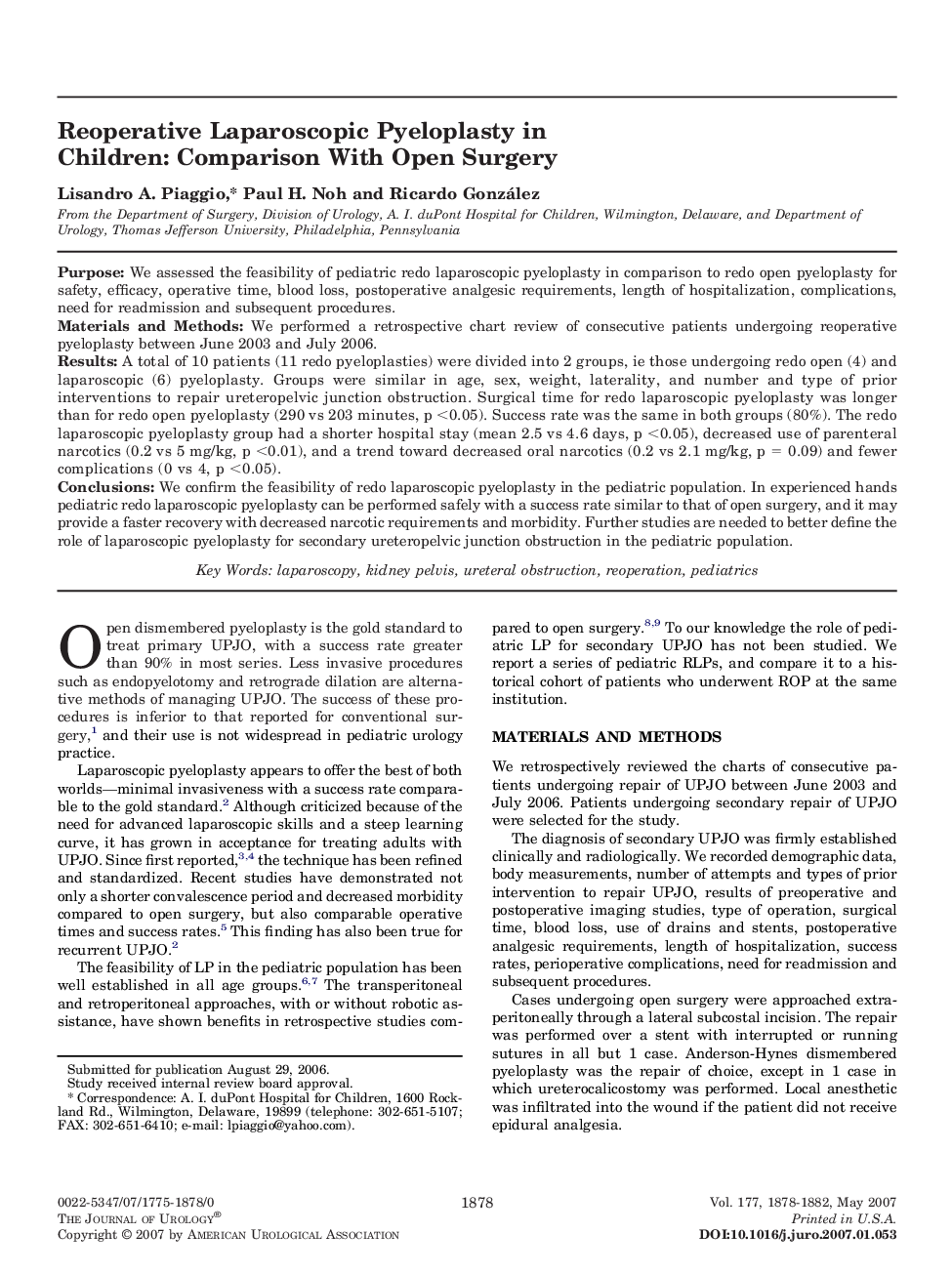| Article ID | Journal | Published Year | Pages | File Type |
|---|---|---|---|---|
| 3873846 | The Journal of Urology | 2007 | 5 Pages |
PurposeWe assessed the feasibility of pediatric redo laparoscopic pyeloplasty in comparison to redo open pyeloplasty for safety, efficacy, operative time, blood loss, postoperative analgesic requirements, length of hospitalization, complications, need for readmission and subsequent procedures.Materials and MethodsWe performed a retrospective chart review of consecutive patients undergoing reoperative pyeloplasty between June 2003 and July 2006.ResultsA total of 10 patients (11 redo pyeloplasties) were divided into 2 groups, ie those undergoing redo open (4) and laparoscopic (6) pyeloplasty. Groups were similar in age, sex, weight, laterality, and number and type of prior interventions to repair ureteropelvic junction obstruction. Surgical time for redo laparoscopic pyeloplasty was longer than for redo open pyeloplasty (290 vs 203 minutes, p <0.05). Success rate was the same in both groups (80%). The redo laparoscopic pyeloplasty group had a shorter hospital stay (mean 2.5 vs 4.6 days, p <0.05), decreased use of parenteral narcotics (0.2 vs 5 mg/kg, p <0.01), and a trend toward decreased oral narcotics (0.2 vs 2.1 mg/kg, p = 0.09) and fewer complications (0 vs 4, p <0.05).ConclusionsWe confirm the feasibility of redo laparoscopic pyeloplasty in the pediatric population. In experienced hands pediatric redo laparoscopic pyeloplasty can be performed safely with a success rate similar to that of open surgery, and it may provide a faster recovery with decreased narcotic requirements and morbidity. Further studies are needed to better define the role of laparoscopic pyeloplasty for secondary ureteropelvic junction obstruction in the pediatric population.
